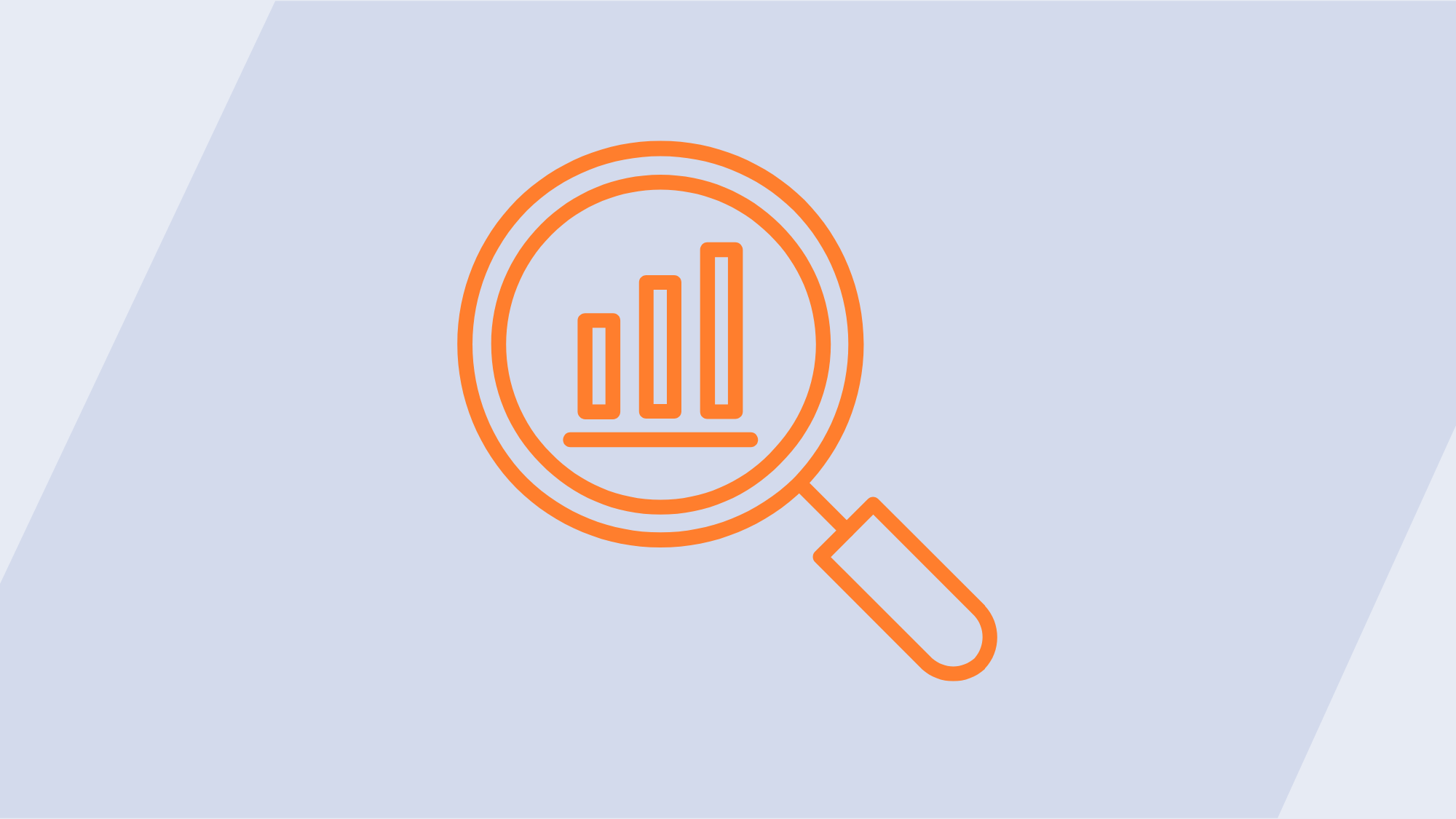In this article, you’ll learn how HMDA compliance can become a strategic growth driver. We’ll explore five ways to put your HMDA data to work:
- Identify underserved markets with HMDA data
- Develop data-backed products and offerings
- Benchmark performance and set strategic goals with peer data
- Make data-driven branch and ATM placement decisions
- Use HMDA data to elevate loan officer performance
Why HMDA Compliance Matters
For years, the Home Mortgage Disclosure Act (HMDA) has been viewed as a regulatory burden or a "check-the-box" exercise for banks, credit unions, and mortgage companies. However, this perspective overlooks the immense strategic value of the data.
This is because HMDA has, for decades, served as a foundational tool for regulators, who have relied on it to monitor the mortgage lending market, identify potential redlining risks, and enforce fair lending laws. The CFPB describes HMDA as the most comprehensive public source of mortgage market data. It is a clear signal that HMDA is a constant even amidst today’s changing regulatory environment.
While there were initial concerns earlier this year about a potential delay, the FFIEC ultimately released the 2024 HMDA mortgage lending transactions “Snapshot” on July 7, 2025. This is important because HMDA data is a powerful, public resource utilized not just by regulators and examiners, but also by numerous community organizations, advocacy groups, and civil rights groups to analyze lending trends and identify potential disparities. This external scrutiny underscores the need for not just accurate reporting, but also a deep internal understanding of what the data says about your institution.
Why HMDA Accuracy is Critical
HMDA data does not exist in a vacuum. It directly impacts other key areas, most notably the Community Reinvestment Act (CRA). CRA examiners rely on HMDA mortgage data to evaluate performance. Inaccurate HMDA data can have ripple effects, potentially skewing CRA performance metrics and raising red flags with examiners. Getting your HMDA data right is a necessity for an institution's entire compliance and business strategy.
From Compliance Burden to Strategic Asset
Ultimately, the most crucial takeaway is this: don't just report your HMDA data, leverage it. The information within HMDA reports is an untapped treasure trove in terms of being able to identify an institution's growth opportunities. It contains the keys to understanding:
- Who is lending in your market and how competitors are positioned
- Who is borrowing from whom across demographics and geographies
- Where gaps exist that your institution is well-positioned to fill
By using analytical tools to go beyond basic reporting, financial institutions are able to find actionable insights that can truly move the needle for their business. With this deeper understanding of the landscape and a fresh perspective on the data itself, it is time to explore the five ways HMDA data can be transformed into a strategic growth driver for your institution.
1. Leverage HMDA Data to Identify Underserved Markets
Traditionally, compliance professionals have viewed HMDA data through a lens of risk mitigation and regulatory scrutiny. However, this perspective should be reconsidered. HMDA data is not merely a regulatory obligation, but a strategic asset and a foundational tool for fair lending. The insights it contains are not about weaknesses, but rather untapped opportunities to drive responsible growth and fulfill an institution's mission to serve its communities.
By collaborating with marketing, lending operations, and strategy teams, compliance officers can provide invaluable, data-driven insights that both mitigate risk and guide market expansion. It’s about empowering the institution to conduct responsible lending outreach with confidence that comes from knowing your strategy is backed by compliance intelligence.
Practical Example
The following scenario highlights how identifying a compliance red flag can simultaneously reveal a significant business opportunity.
- Identify gaps: Use HMDA data to analyze loan-level data for specific census tracts or zip codes. When a pattern shows a high number of applications but a low number of originations, it should immediately raise a flag for compliance teams.
- Investigate root causes: This discrepancy indicates that something is not working, requiring professionals to go beyond the surface to identify the root cause. Compliance expertise is crucial for investigating whether there are procedural breakdowns in the application process, an inefficient loan pipeline, or gaps in fair lending and CRA outreach programs.
- Visualize and map the data: Institutions should take the analysis further by using advanced redlining and market analysis tools to map the data. This visualization helps determine if the issue stems from a lack of physical presence, such as a branch or a dedicated loan officer; weak community outreach; or a marketing disconnect.
- Translate insights into action: By identifying both a fair lending risk and a business opportunity in the same data set, compliance teams can work with business units to develop a strategic, targeted solution that addresses the root cause. This is how compliance is transformed from a cost of doing business into a core driver of responsible, profitable growth.
2. Develop Data-Backed Products and Offerings
Now that underserved communities have been identified through an analysis of HMDA data, the next logical question is, “Do we have the right products in place to serve these communities?” HMDA peer data allows institutions to answer that question with hard evidence demonstrating what the market needs, instead of relying on guesswork.
Opportunities by Loan Type
The key is to uncover the new opportunity for products using HMDA Peer data. This involves performing a competitive analysis to see what is working for others, and identify where a financial institution might have product gaps.
Examples might include:
- Home Purchase Transactions: If a peer institution is handling a disproportionately high volume of home purchases in a particular area, this is a cue to take strategic action. Instead of competing head-to-head on the same terms, a financial institution can offer unique solutions. This could involve responding with targeted programs like a First-Time Home Buyer Assistance Program to build a strong customer base, or a Special Purpose Credit Program (SPCP), which is a compliant and effective way to design products that specifically help meet the unique needs of a particular community. While there were initial concerns in 2025 about SPCPs being viewed adversely, regulators have clarified that SPCPs remain permissible under ECOA and the FHA with the proper documentation and when tied to a defined community need. They remain a good vehicle that is absolutely legal.
- Refinancings: By analyzing the "loan purpose" field, a financial institution can identify a missed opportunity for enhanced market share. The refinancing market can be cyclical, often tied to changes in interest rates. HMDA data can be used as a forward-looking indicator to ensure an institution is prepared for market shifts. Those who build capacity early will be best positioned to capture demand.
- Home Equity Lines of Credit (HELOCs) & Home Improvement Loans: HMDA data is an excellent resource for uncovering demand for other types of loans that use a home as collateral. A strong local market for HELOCs from peers is a great indication of demand. Banks and credit unions can respond with a new home improvement loan program or niche campaigns (e.g., energy efficiency upgrades).
By aligning product development with peer data, lenders can address community needs, strengthen CRA performance context, and build a data-driven business strategy.
Learn More in Our On-Demand Webinar
Want to see how these strategies work in practice? Watch our on-demand webinar where Arielle Sutherland and Dr. Anurag Agarwal dive deeper into how financial institutions can leverage HMDA data.
The public nature of HMDA data provides a treasure trove of competitive intelligence that can be used to set and achieve strategic growth goals. This is about understanding an institution’s specific position within the market, versus just trying to understand the market in general. It’s about using public information to gain a competitive edge and inform the most critical business decisions.
Analyze Competitors to Inform Your Strategy
HMDA data is public. Institutions can leverage this data to proactively understand competitor market share, their most successful product offerings, and the geographic areas where they are concentrating their efforts. This level of insight allows institutions to see the competitive landscape with clarity.
Benchmark Performance to Set Realistic Goals
Many institutions use competitor activity as a benchmark to see how they measure up in key markets. By analyzing this data, an institution can establish realistic and ambitious growth goals based on a clear understanding of its current market position. This moves goal-setting from an internal, speculative process to an external, data-driven one.
Align Goals with Market Gaps
This is the most crucial step. By comparing an institution's strengths with its competitors' weaknesses, it can find white spaces in the market. The goal is to fill a need that competitors are not addressing. For example, if an institution discovers a top competitor is a strong player in home purchase loans but has a very low volume of home improvement loans, it can set a goal to aggressively capture that segment of the market.
4. Make Data-Driven Branch & ATM Placement Decisions
HMDA data allows institutions to move beyond instinct-based decisions for major investments in physical expansion. By layering HMDA, peer, and demographic data, institutions can make smarter, more strategic choices about where to place branches, ATMs, and loan officers.
Analyze Market Activity & Demographics
Institutions should use their HMDA data to pinpoint where loan applications are originating, identifying areas of existing demand. They should also overlay peer data and key demographic information to understand competitor coverage and identify underserved markets with high-potential populations. This analysis should not be a one-time event, but rather data that compliance teams are continuously monitoring to stay ahead of the curve.
Evaluate & Optimize Your Presence
This analysis helps institutions assess the likely impact of proposed placements, as well as potential competitor moves, on their market share. This data-driven approach enables institutions to execute several key reaction strategies:
- When a competitor closes a branch, an institution can use HMDA data to confirm the market is still viable and strategically move in to capture abandoned market share.
- When a competitor opens a new branch, the institution can proactively assess the threat and adjust its own strategy to mitigate any potential impact.
Our final HMDA data strategy shifts the focus inward, to an institution's most valuable asset: its people. HMDA data can be used as a powerful tool to analyze and elevate loan officer performance, transforming compliance into a strategic growth driver.
- Analyze Performance for Best Practices: Institutions can review individual loan officer performance across a range of metrics, such as origination volume and success rates in specific demographics or loan types. This analysis helps identify top performers and successful strategies that can be shared across the entire team to lift overall performance.
- Provide Targeted Training: HMDA data can help identify performance patterns that may require additional guidance, such as a higher-than-average denial rate in a specific demographic. This presents a crucial opportunity to provide targeted training and support, turning potential compliance risks into coachable moments.
- Shape Incentives & Goals: Using data-driven insights, institutions can create a more strategic and effective approach to motivating their team. They can create effective incentives and set clear, achievable goals for loan officers that are not only fair but also strategically aligned with the institution's objectives.
FAQs about HMDA and Strategic Growth
Q: How can HMDA data be positioned as a business growth tool?
A: By framing HMDA data as market intelligence, compliance officers can show executives how to identify market gaps and growth opportunities while meeting regulatory expectations.
Q: What HMDA metrics are most valuable for CRA exam readiness?
A: Application-to-origination ratios, peer lending patterns, and geographic penetration in LMI or majority-minority tracts are commonly scrutinized by examiners.
Q: How should compliance teams use HMDA peer data?
A: Peer data provides benchmarks for approval rates, product mix, and geographic reach. Comparing your institution’s activity to that of peers highlights both risk exposure and growth opportunities.
Q: What is the connection between HMDA accuracy and examiner trust?
A: Examiners often view HMDA files as their first touchpoint. Consistently accurate data builds credibility, while errors may prompt deeper CRA or fair lending reviews.
Conclusion: HMDA as a Strategic Asset
By moving from a reactive, compliance-focused mindset to a proactive, growth-oriented one, financial institutions can truly unlock HMDA's full potential. We have explored how HMDA data allows institutions to identify new customers by finding underserved markets, and to develop new products and offerings that are based on a data-driven understanding of market needs. By leveraging HMDA peer data, institutions can outsmart competitors, optimize their physical footprint, and elevate team performance by identifying and disseminating best practices.
The key takeaway is that HMDA is no longer just about looking in the rearview mirror to assess past performance; it is a powerful tool for charting a course for future growth. It is about leveraging this strategic asset to build a more effective, competitive, and profitable institution.
Next Step: Unlock Your HMDA Advantage
Ready to turn your HMDA data into your institution’s growth strategy? Talk to our compliance experts.
Written by: Arielle Sutherland, Director of Compliance Products, and Dr. Anurag Agarwal, Founder & President







